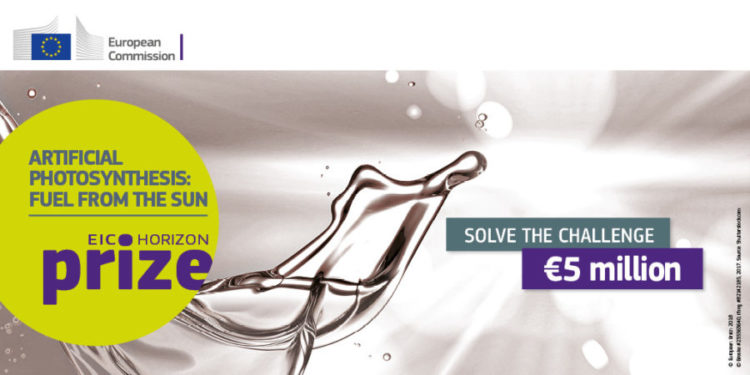
EIC Horizon Prize on Artificial Photosynthesis 2022
Dec 15, 2022 | News
On 5 Dec it was announced the winners of the EIC Horizon Prize ‘Fuel from the Sun: Artificial Photosynthesis”. The winner is the University of Tokyo in cooperation with INPEX Corporation (Japan)
The EIC Horizon Prize ‘Fuel from the Sun: Artificial Photosynthesis’ promotes new technologies on solar conversion to green fuels as an alternative to fossil fuels. On 5 December 2022 the €5 million Prize was awarded to the University of Tokyo and INPEX corporation for their prototype ‘Artificial Photosynthesis Driven by Water-Splitting Particulate Photocatalyst (UTIAPS)’. UTIAPS is a fully functioning prototype that produces synthetic fuel (methane), which in turn was proven to fuel a Sterling motor. This achievement represents a world-first innovative artificial photosynthetic device. On one side, the system is composed of photocatalysts that split water into hydrogen (H2) and oxygen (O2) using solar energy. On the other hand, the purified hydrogen (H2) is used to convert carbon dioxide (CO2) to methane (CH4). They are now working to improve the water splitting system and plan to produce some other products such as MCH and NH3.
This Prize is at the core of SUNERGY/SUNER-C activities. Our community has extended collaborations with the University of Tokyo and our partners are working in close collaboration with the winners of the award. The SUNERGY initiative celebrates the successful development of a fully functional, bench-scale prototype device using artificial photosynthesis to synthesize green fuel capable of powering a small engine. This is an example that solar conversion systems of this kind will be of utterly importance in the near-future of European energy and chemical industries.
The Horizon Prize ‘Fuel from the Sun: Artificial Photosynthesis’ was launched in December 2017 as one of six European Innovation Council (EIC) Horizon Prizes and is also a European Union contribution to the activities under the Mission Innovation Challenge ‘Converting Sunlight to fuels and chemicals’. The other two finalists are the Commissariat à l’énergie atomique et aux énergies alternatives (CEA), France, and the University of Cambridge, United Kingdom.
CEA was finalist for their prototype ‘European Autonomous Solar Integrated fuel station (EASI-Fuel)’. Their device was innovative because of the high integration of the processes: EASI Fuel converts CO2 into methane by using micro-organisms and the sunlight. It couples this bioreactor to a series of photo-electrochemical cells (IPEC), integrated with tandem solar cells, to continuously supply hydrogen via electrolysis of water. This enables the continuous, selective and almost total conversion of CO2 into methane without the need for intermediate hydrogen and energy storage.
Finally, the University of Cambridge was acknowledged for the achievements of their prototype ‘Hybrid Perovskite Photoelectrochemical Leaf for Autonomous Syngas Production (CamSolarFuel)’. CamSolarFuels uses sunlight to power the conversion of carbon dioxide and water into syngas fuel, a gas mixture consisting of hydrogen and carbon monoxide. The device enables direct solar-to-fuel conversion as it is based on an ‘artificial leaf’ design that mimics the natural leaf in form and function. It is distinct from other indirect solar-to-fuel approaches that require either a combination of photovoltaic and electrolysis or hydrogenation of carbon dioxide to produce carbon-based fuels.
